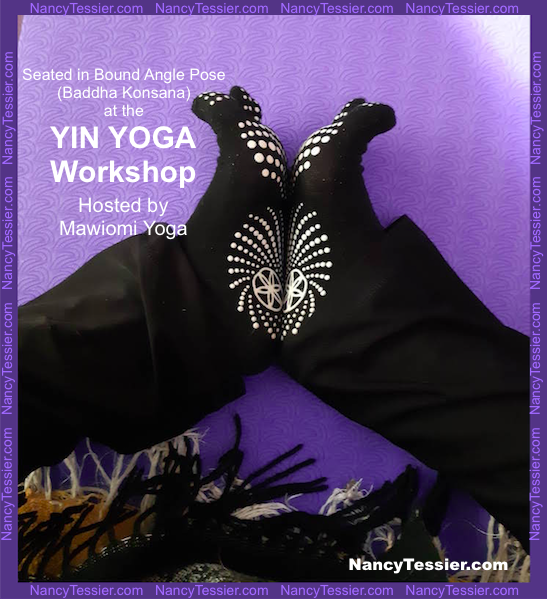
 Our newest neighbour was doing yoga in their driveway. It was a beaufitul day; temperatures reached the eighties in the afternoon so I don’t blame her for wanting to be outside.
Our newest neighbour was doing yoga in their driveway. It was a beaufitul day; temperatures reached the eighties in the afternoon so I don’t blame her for wanting to be outside.
I have always been interested in yoga and believed it to be a religion more than a physical exercise type, so I looked it up on Wikipedia and the following is information directly from that site.
Yoga is a group of physical, mental, and spiritual practices or disciplines which originated in ancient India. There is a broad variety of yoga schools, practices, and goals in Hinduism, Buddhism, and Jainism. Among the most well-known types of yoga are Hatha yoga and Rāja yoga.
The origins of yoga have been speculated to date back to pre-Vedic Indian traditions; it is mentioned in the Rigveda, but most likely developed around the sixth and fifth centuries BCE, in ancient India’s ascetic and śramaṇa movements. The chronology of earliest texts describing yoga-practices is unclear, varyingly credited to Upanishads. The Yoga Sutras of Patanjali date from the first half of the 1st millennium CE, but only gained prominence in the West in the 20th century. Hatha yoga texts emerged around the 11th century with origins in tantra.
Yoga gurus from India later introduced yoga to the West, following the success of Swami Vivekananda in the late 19th and early 20th century. In the 1980s, yoga became popular as a system of physical exercise across the Western world. Yoga in Indian traditions, however, is more than physical exercise; it has a meditative and spiritual core. One of the six major orthodox schools of Hinduism is also called Yoga, which has its own epistemology and metaphysics, and is closely related to Hindu Samkhya philosophy.
The ultimate goal of Yoga is moksha (liberation), although the exact definition of what form this takes depends on the philosophical or theological system with which it is conjugated.
According to Jacobsen, “Yoga has five principal meanings:
- Yoga, as a disciplined method for attaining a goal;
- Yoga, as techniques of controlling the body and the mind;
- Yoga, as a name of one of the schools or systems of philosophy (darśana);
- Yoga, in connection with other words, such as “hatha-, mantra-, and laya-,” referring to traditions specialising in particular techniques of yoga;
- Yoga, as the goal of Yoga practice.
According to David Gordon White, from the 5th century CE onward, the core principles of “yoga” were more or less in place, and variations of these principles developed in various forms over time:
- Yoga, is a meditative means of discovering dysfunctional perception and cognition, as well as overcoming it for release from suffering, inner peace and salvation; illustration of this principle is found in Hindu texts such as the Bhagavad Gita and Yogasutras, in a number of Buddhist Mahāyāna works, as well as Jain texts;
- Yoga, as the raising and expansion of consciousness from oneself to being coextensive with everyone and everything; these are discussed in sources such as in Hinduism Vedic literature and its Epic Mahābhārata, Jainism Praśamaratiprakarana, and Buddhist Nikaya texts;
- Yoga, as a path to omniscience and enlightened consciousness enabling one to comprehend the impermanent (illusive, delusive) and permanent (true, transcendent) reality; examples are found in Hinduism Nyaya and Vaisesika school texts as well as Buddhism Mādhyamaka texts, but in different ways;
- Yoga, as a technique for entering into other bodies, generating multiple bodies, and the attainment of other supernatural accomplishments; these are, states White, described in Tantric literature of Hinduism and Buddhism, as well as the Buddhist Sāmaññaphalasutta; James Mallinson, however, disagrees and suggests that such fringe practices are far removed from the mainstream Yoga’s goal as meditation-driven means to liberation in Indian religions.
White clarifies that the last principle relates to legendary goals of “yogi practice”, different from practical goals of “yoga practice,” as they are viewed in South Asian thought and practice since the beginning of the Common Era, in the various Hindu, Buddhist, and Jain philosophical schools.
Yoga is great in so many ways, even for constipation. Here’s a detailed guide on the 14 best yoga poses for relieving constipation, based on a yoga instructor’s years of teaching experience. Check it out
So now that I know even more about yoga, I believe the neighbour is practicing it as a form of exercise and likely not part of a religion.
Source



